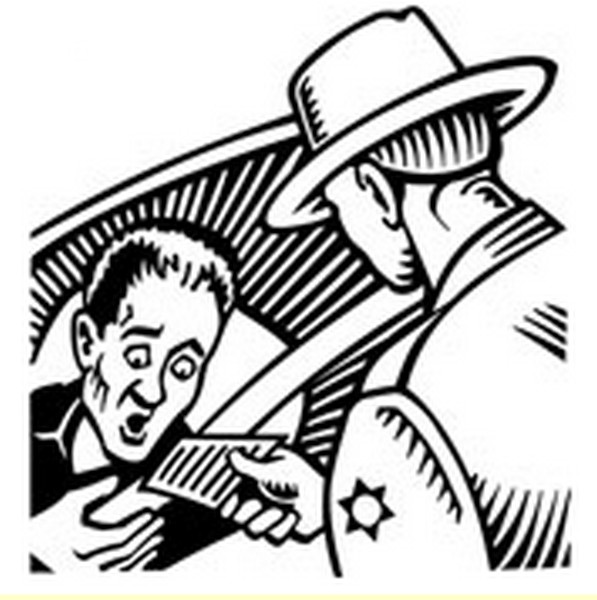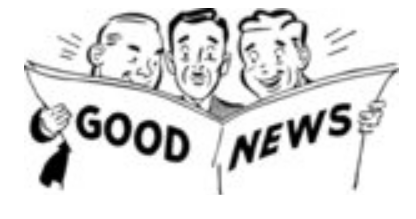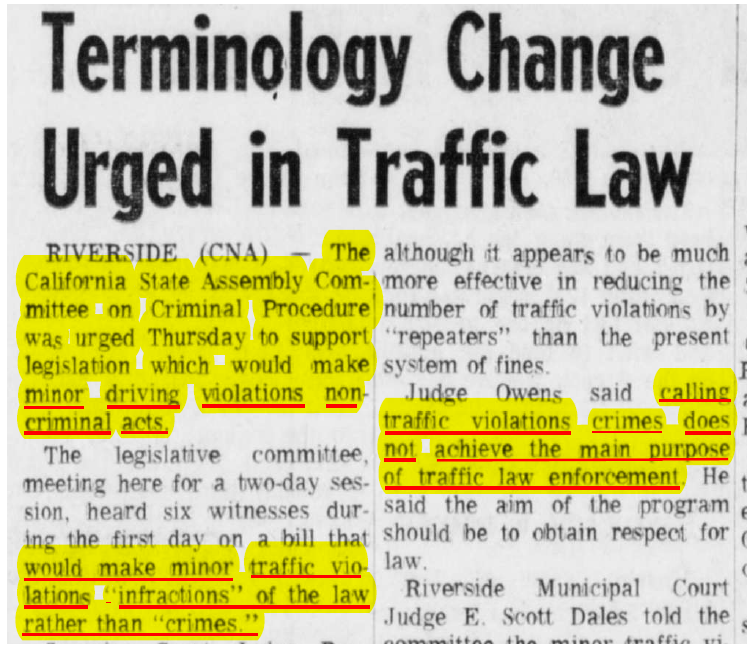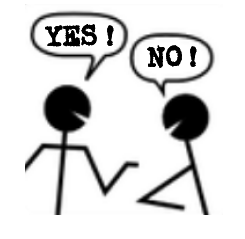 UNRESOLVED DISPUTE/GRIEVANCE
UNRESOLVED DISPUTE/GRIEVANCE
"Common
as the event may be, it is a serious thing to arrest a citizen, and it
is a more serious thing to search his person; and he who accomplishes
it, must do so in conformity to the law of the
land. There
are two reasons for this; one to avoid bloodshed, and the other to
preserve the liberty of the citizen. Obedience to
the law
is the bond of society, and the officers set to enforce the law are not
exempt from its mandates.".
Town
of Blacksburg v. Bean (1916) 104 S.C. 146, 88 S.E. 441
Allen
v. State (1924) 197 N.W. 808, 810-11 (Wis.)
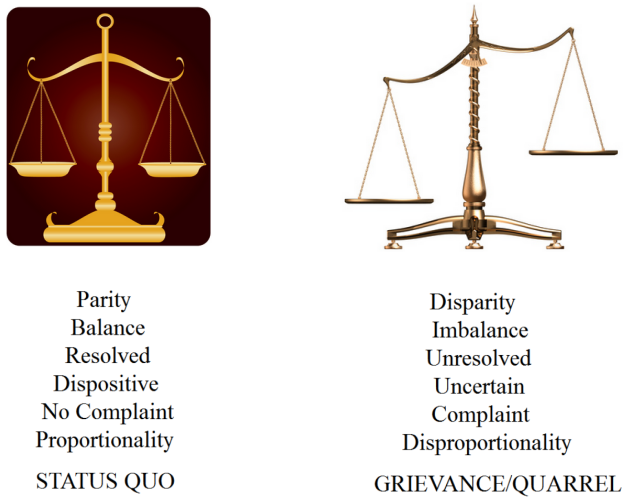
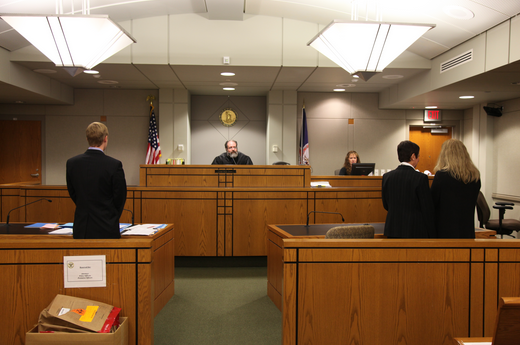 THE PLACE
WHERE UNRESOLVED DISPUTES
ARE RESOLVED WITHOUT
BLOODSHED
THE PLACE
WHERE UNRESOLVED DISPUTES
ARE RESOLVED WITHOUT
BLOODSHED
"The
relevant, dispositive inquiry in determining whether a right is clearly
established is whether it would be clear to a reasonable officer that
his conduct was unlawful in the situation he confronted." (Saucier v.
Katz , supra , 533 U.S. at p. 202.)
Macias
v. County of Los Angeles (2006) 144 Cal.App.4th 313

THE
LAW OF TORTS
William L. Prosser
Professor of Law
Hastings College of Law
FOURTH EDITION
WEST PUBLISHING CO.
1971
Chapter 13
STRICT LIABILITY
p. 492
75. BASIS
OF LIABILITY
¶1:
As we have seen, the early law of torts was not concerned primarily
with the moral responsibility, or “fault” of the
wrongdoer. It
occupied itself chiefly with keeping the peace between individual, by
providing a remedy which would be accepted
in lieu of private vengeance.
This
is the reason we go to court. We want to avoid*...

*
Uncompensated reference
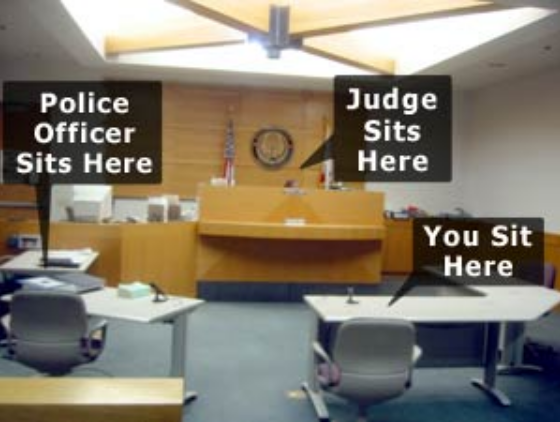 - CRIMINAL ACTION
-
- CRIMINAL ACTION
-
THAT
MUST BE A TRAFFIC INFRACTION CASE.
 THERE IS
NO PROSECUTOR BUT THERE IS AN ARRAIGNMENT
THERE IS
NO PROSECUTOR BUT THERE IS AN ARRAIGNMENT 
 NEITHER THE PEOPLE NOR THEIR ATTORNEY APPEARS
NEITHER THE PEOPLE NOR THEIR ATTORNEY APPEARS

...the
court has no authority to substitute itself as the representative of
the People...
People
v. Orin
(1975) 13 Cal.3d 937
TRANSLATION:
THE COURT HAS NO JURISDICTION...
-
THE RULE OF CONVENIENCE
-
Or how the State shifts its burden of proof to the still
innocent defendant.
 THE JOKER IN THE DECK
THE JOKER IN THE DECK
The
court initially stated it thought the People had failed to prove a
violation of Vehicle Code section 12500. The People
referred the court to CALJIC No. 16.631, stating: "I'll refer the Court
to CALJIC 16.631 and the authority cited and that's jury instruction
which indicates the People do not have to prove that the defendant did
not have a license. Since it is a fact that is peculiarly within the
defendant's knowledge."
CALJIC No. 16.631
provides: "It is not necessary for the People to prove that
the
defendant did not have a license [of the appropriate class or [34
Cal.App.4th 197] certification] to operate a motor vehicle. Whether the
defendant was or was not properly licensed is a matter peculiarly
within [his] [her] own knowledge. The burden is on the
defendant
to raise a reasonable doubt as to [his] [her] guilt of driving a motor
vehicle upon a highway without being the holder of a driver's license
[of the appropriate class or certification]."
The
trial court read the instruction, found it to be the correct law, and
concluded that because the matter was within Shawnn's own personal
knowledge, the burden was shifted to Shawnn to prove that he had a
valid license.
[2] Shawnn asserts that the
court erred in relying on CALJIC No. 16.631. Shawnn contends
this instruction is unconstitutional because it improperly shifts the
burden of proof on an element of the crime to the accused.
While
acknowledging the rule of convenience, Shawnn argues that it should not
apply here; whether or not he holds a driver's license is not a fact
peculiarly within his knowledge, and the People have ready and
convenient access to the records of the Department of Motor Vehicles.
Respondent
contends that the rule of convenience applies and views a driver's
license as no different than any other type of license where the rule
has been previously applied.
The rule was
adopted by the California Supreme Court in People v. Boo Doo Hong
(1898) 122 Cal. 606 [55 P. 402]. In Boo Doo Hong the court
followed the general consensus by legal writers that when there are
facts peculiarly and clearly within the knowledge of the defendant, and
the defendant can show the evidence without the least inconvenience,
then the defendant is required to offer this proof. Both of the legal
writings relied on by the court offered license cases as examples. (Id.
at pp. 608-609.) [34 Cal.App.4th 198]
Thus,
the California Supreme Court in Boo Doo Hong clearly held that a
defendant has a burden of producing a license when a license would act
as a complete defense. "As far back as the case of People v. Boo Doo
Hong (1898), 122 Cal. 606 ..., it has been the law that when a license
or prescription would be a complete defense, the burden is upon the
accused to prove that fact so clearly within his knowledge." (People v.
Martinez (1953) 117 Cal.App.2d 701 , 708 [256 P.2d 1028].)
In
People v. Montalvo (1971) 4 Cal.3d 328 [93 Cal.Rptr. 581, 482 P.2d 205,
49 A.L.R.3d 518], the California Supreme Court refused to apply the
rule of convenience to an allegation that a defendant was 21 years of
age or older. "The allegation that the defendant is 21 years of age or
over is not a negative averment. A true negative averment, for example
that the defendant lacked a prescription for a drug, the possession of
which was lawful only on prescription, may often be practically
impossible for the prosecution to prove but easy for the defendant to
refute. In the absence of a legislative provision that minority is a
defense, we do not believe that the relative ability of the prosecution
and defense to establish the defendant's age is sufficient to justify
invoking the rule of necessity and convenience to relieve the
prosecution of its burden of proving the defendant's majority under
section 11502.
"The defendant may not
necessarily have any substantially greater ability to establish his age
than does the prosecution. A defendant's precise age is not a matter
within his personal knowledge but something he must have learned either
from family sources or public or church records. In this age of
documented existence there is little doubt that ordinarily the
prosecution may be able to secure evidence of the defendant's age.
Moreover, in those rare cases where there is no evidence of the
defendant's precise age except his own belief as to what it is, the
defendant might be as hard pressed as the prosecution to verify it. If
minority be deemed a defense, a defendant in such a case would be at
the mercy of the jury's power to disbelieve his testimony even though
it be the only available evidence of age. We conclude that a case for
the application of the rule of necessity and convenience here has not
been made out." (People v. Montalvo, supra, 4 Cal.3d at pp. 334-335.)
Driving
without a valid driver's license is a negative averment just as
possessing a controlled substance without a prescription has been held
to be. Holding a valid driver's license is a matter within the
defendant's personal knowledge and it would not be unduly harsh or
inconvenient for a defendant to produce the license. The California
Supreme Court in Boo Doo Hong specifically endorsed the rule in license
cases.
The one factor urged by Shawnn as a
reason to not apply the rule of convenience is that the People have
ready access to driver's license records [34 Cal.App.4th 199] in
California. We cannot ignore that much has changed since 1898 in
technology and that access to particular types of information can often
be achieved with little or no inconvenience in a very short period of
time. Yet there is insufficient evidence before us from which we can
determine how easily accessible and producible in admissible form this
information is to the People. Because the Supreme Court's ruling in Boo
Doo Hong continues to be good law, and because of the lack of evidence
as to the People's access to driver's license information, we choose
not to deviate from the well-established principle of applying the rule
of convenience to cases involving licenses.
Shawnn
failed to produce his driver's license when asked to do so. Sergeant
Ruckman ran Shawnn's name through a Department of Motor Vehicles check
and was advised that Shawnn did not have a valid license. At trial,
Shawnn failed to produce any evidence that he possessed a valid
driver's license. Shawnn failed to show he was a licensed driver.
In re
Shawnn
F. (1995) 34 Cal.App.4th 184

THE
PEOPLE, Respondent, v. BOO DOO HONG, Appellant
Crim. No. 420
Supreme Court of California, Department Two
122 Cal. 606; 55 P. 402; 1898 Cal. LEXIS 641
December 8, 1898
PRIOR-HISTORY:
APPEAL from a judgment of the Superior Court of Tehama County and from
an order denying a new trial.
John F. Ellison, Judge.
COUNSEL: J. T. Matlock, for Appellant.
W. F. Fitzgerald, Attorney-General, and C. N.
Post, Deputy Attorney-General, for Respondent.
JUDGES: Belcher, C. Haynes, C., and Searls, C.,
concurred. Henshaw, J., McFarland, J., Temple, J.
OPINION BY: BELCHER
OPINION
The
defendant was charged by information, filed in the superior court of
Tehama County, with the crime of willfully and unlawfully practicing
medicine in the state of California, without having first procured a
certificate to so practice as required by law. He demurred to the
information, and, his demurrer being overruled, then pleaded not
guilty. He was subsequently tried and found guilty of the offense
charged, and judgment was entered that he pay a fine of three hundred
and fifty dollars, et cetera. From that judgment and an order denying
his motion for a new trial he has appealed.
The demurrer was
properly overruled. The facts stated in the information were sufficient
to constitute a public offense, and it was not necessary to allege the
existence of the medical societies referred to. ( People v. O'Leary, 77
Cal. 30.)
At the trial uncontradicted evidence was
introduced by
the prosecution sufficiently showing that for several months prior to
the filing of the information defendant had been practicing medicine at
Red Bluff, in the county of Tehama ( People v. Lee Wah, 71 Cal. 80),
but no evidence was introduced on either side showing, or tending to
show, that defendant had or had not a certificate to so practice, as
required by law. (Stats. 1875-76, p. 792; Stats. 1877-78, p. 918.) And
at the conclusion of the evidence the court instructed the jury quite
fully upon all the questions of law involved in the case, and, among
other things, told them, in effect, that the burden was upon the
defendant to establish that he had a certificate to practice medicine
as provided by law, and, if he failed to prove that he had such
certificate, then it must be taken as true that he had not procured a
certificate to so practice medicine.
It is contended for
appellant that the said instruction was erroneous and misleading, and
that the verdict was not justified by the evidence, because in a
criminal action the defendant is presumed to be innocent until he is
proved guilty beyond a reasonable doubt, and this presumption continues
through the entire trial, and the burden is upon the people to
establish his guilt by proving every material allegation of the
information; and that as the information charged that defendant had
practiced medicine without having a certificate to do so, it devolved
upon the people to prove that fact, and having entirely failed to offer
any such proof he ought not to have been convicted, and his motion for
new trial should have been granted.
The general rule is
undoubtedly as above stated, but there is a well recognized exception
to the rule, where there is a negative averment of a fact which is
peculiarly within the knowledge of the defendant.
Mr. Greenleaf,
in his work on Evidence, volume 1, section 79, under the heading
"Negative Allegations," says: "But when the subject matter of a
negative averment lies peculiarly within the knowledge of the other
party, the averment is taken as true unless disproved by that party.
Such is the case in civil or criminal prosecutions for a penalty for
doing an act which the statutes do not permit to be done by any
persons, except those who are duly licensed therefor; as, for selling
liquors, exercising a trade or profession, and the like. Here the
party, if licensed, can immediately show it without the least
inconvenience; whereas, if proof of the negative were required, the
inconvenience would be very great." (Citing a large number of cases.
See, also, 3 Rice on Evidence, sec. 260, where the same rule is
declared.)
In 1 Jones' Law of Evidence, section 179, under
the
heading "Burden as to particular facts lying peculiarly within
knowledge of a party," it is said: "This is often illustrated in
prosecutions for selling liquors or doing other acts without the
license required by law. By a few authorities the rule is prescribed
that in such cases the prosecution must offer some slight proof of the
fact that no license has been granted, for example, by producing the
book in which licenses are recorded; and, if the book fails to show
that a license has been granted, the burden is shifted upon the
defendant to prove the fact claimed by him; but the greater number of
authorities hold that where a license would be a complete defense the
burden is upon the defendant to prove the fact so clearly within his
own knowledge." (Citing cases.)
We think the rule upon this
subject generally recognized and followed the correct one, and
therefore conclude that the court did not err in giving the instruction
complained of, and that the verdict was justified by the evidence.
The judgment and order appealed from should be
affirmed.
For the reasons given in the foregoing opinion
the judgment and order appealed from are affirmed.

Q:
WHAT'S A LAWYER?
 A: A
MECHANIC WITH CLEAN FINGERNAILS
A: A
MECHANIC WITH CLEAN FINGERNAILS
A lawyer
is a mechanic.
They fix things. There’s repair manuals for their
trade. Their repair manuals are located at the Law
Library. Lots of repair manuals are also on-line so
anyone
can read them to determine if the mechanic knows what they’re doing.
The
primary tools of the
mechanic’s trade are his eyes, brain, mouth, and
fingers.
Presumably if you have these tools you too could do what the lawyer
does. It’s helpful to have a typewriter or computer with a
printer.
The
lawyer mechanic primarily
fixes misunderstandings and disagreements. That’s
something
anyone with a mouth and semi-functional brain can do.
If you don't show up after
promising to show up, you lose.
Neither the People, who are the alleged victim, nor their attorney, the
District Attorney, bothers to show up to tend their case.
Their
case must be on ...

WE WIN!
Is that how it works?
You're accused of an alleged crime and neither the plaintiff
nor
their attorney appear, in fact they don't even file a complaint.
This is your Justice System. It was set up to benefit the
People. The Founders would not have set up a system
they
risked their lives and the lives of their families to recreate what
they went to war and defeated.
Seriously, who prosecutes the
CRIMINAL CASE? Who filed the CRIMINAL CASE?
Who's
the witness in the CRIMINAL CASE? What does the Accuser HAVE
TO do?
[4]
Whether or not the People provide a prosecuting attorney, the citing
officer who testifies as to the circumstances of the citation is a
witness, no more, no less.
People
v.
Marcroft (1992) 6 Cal.App.4th Supp. 1
Appellate Department, Superior Court, Orange
Actori
incumbit onus probandi
The burden of proof lies on the plaintiff.
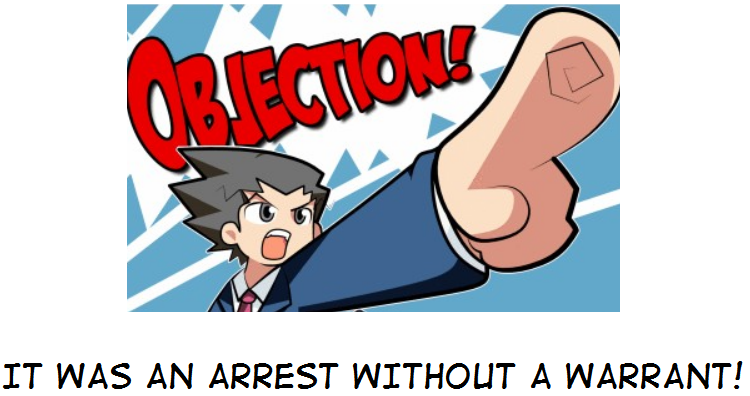
Defendant
makes a prima facie case of unlawful arrest when he establishes that
arrest was made without a warrant, and burden rests on prosecution to
show proper justification.
People
v.
Holguin (1956) 145 Cal.App.2d. 520
If
objection to illegal arrest may be raised at all after accused has
subjected himself to the jurisdiction of the court, the issue must at
least be raised before a plea is entered at arraignment.
Ringer
v. Municipal Court of Modesto Judicial Dist., Stanislaus County
(1959) 175 C.A.2d 786
 THE ACCUSER
BEARS THE BURDEN OF
PROOF
CALIFORNIA EVIDENCE
CODE
THE ACCUSER
BEARS THE BURDEN OF
PROOF
CALIFORNIA EVIDENCE
CODE
SECTION 520
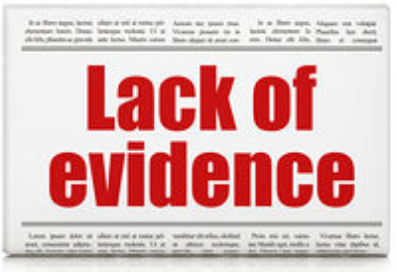 NO CONVICTION!
NO CONVICTION!
Defendant
makes a prima facie case of unlawful arrest when he establishes that
arrest was made without a warrant, and burden rests on prosecution to
show proper justification.
People
v.
Holguin (1956) 145 Cal.App.2d. 520
Defendant
notes that the prosecution has the burden of proving, if it can, some
justification for a warrantless search or seizure, and therefore a
warrantless search is presumptively unreasonable.
...once defendant had properly raised the issue,
the prosecution had the burden of proof.
The prosecution retains the burden of proving
that the warrantless search or seizure was reasonable under the
circumstances.
People
v.
Williams (1999) 20 Cal. 4th 119
 Q: WHAT'S A JUDGE?
Q: WHAT'S A JUDGE?
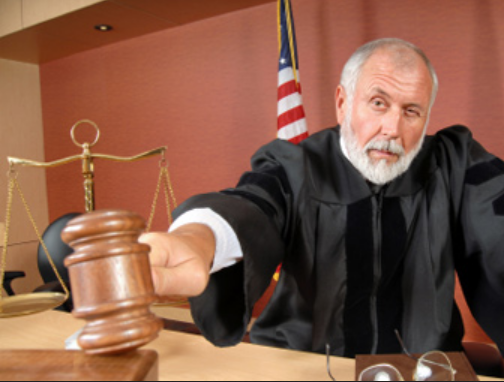
A: AN UMPIRE
The
Judicial Officer is not the Defendant's adversary. The
Defendant's
adversary is the District Attorney or City Attorney or private citizen.
The judicial officer is the umpire. They play for
neither team.
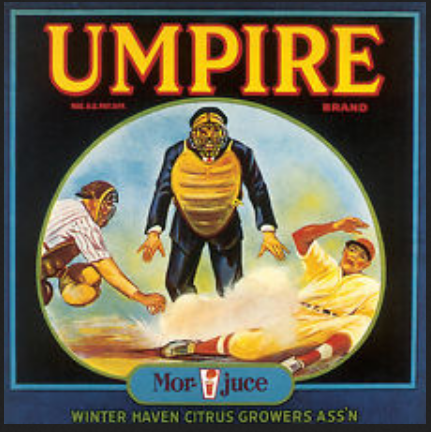 THEY KNOW
THE RULES. SHOULDN'T
YOU?
THEY KNOW
THE RULES. SHOULDN'T
YOU?
JUDGE’S
MANDATORY DUTY
 DO NOT ARGUE WITH THE JUDICIAL OFFICER.
DISQUALIFY THEM!
DO NOT ARGUE WITH THE JUDICIAL OFFICER.
DISQUALIFY THEM!
Code
of Civil Procedure
170.1. (a) A
judge shall be disqualified if any one or more of the following is true:
(2) (A)
The judge served as a lawyer in the proceeding,
(6) (A) For
any reason:
(iii) A
person aware of the facts might reasonably entertain a doubt that the
judge would be able to be impartial.
 HEARSAY AND FOUNDATION! ASSUMES FACTS
NOT IN EVIDENCE
HEARSAY AND FOUNDATION! ASSUMES FACTS
NOT IN EVIDENCE.
Your
Honor, the question assumes
facts not in evidence. We are here to ask for
facts from
the witnesses, not assume that a fact exists.
Your
Honor, we object to the lack
of foundation because [e.g., there is no showing of the witness’s time
and place of observation of the facts called for].
“An
objection to foundation is futile unless it is sufficiently specific to
afford the opposing party opportunity to cure it.”
United
States
v. Michaels, 726 F.2d 1307, 1314 (8th Cir. 1984)
It
is the duty of courts to be watchful for the constitutional rights of
the citizen, and against any stealthy encroachments thereon.
Their motto should be obsta principiis.
BOYD v.
U.S.
(1886) 116 U.S. 616
Judge has obligation to impose contempt and
swiftly punish those who attempt to win by disobeying rules.
Betsworth
v.
W.C.A.B. (1994) 26 Cal.App.4th 586
When
a person is clothed with power and has assumed the duties of a public
officer, he has taken upon himself the obligation to perform those
duties; and if he neglects or refuses to do so, any person, whose
rights thereby injuriously affected, is entitled to demand relief, and
mandamus is the proper remedy.
Sinton
v.
Ashbury (July 1871) 41 Cal. 526
California
Government Code
72190.
Within the jurisdiction of the court and under the direction of the
judges, commissioners shall exercise all the powers and perform all of
the duties prescribed by law. At the direction of the judges,
commissioners may have the same jurisdiction and exercise the same
powers and duties as the judges of the court with respect to any
infraction or small claims action. They shall be ex officio
deputy clerks.
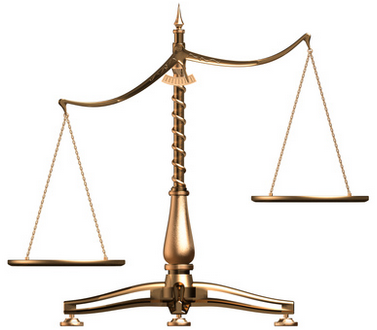 BURDEN OF PROOF:
CRIME:
BURDEN OF PROOF:
CRIME:
PROOF
ESTABLISHED WITH SUFFICIENT
EVIDENCE BEYOND A REASONABLE DOUBT THE ACCUSED COMMITTED A CRIME
YOUR
ACCUSER DOES NOT WIN UNLESS THEY PUT STUFF IN THEIR SIDE OF THE SCALE
THAT MAKES IT GET CLOSER TO THE DESK TOP THAN WHAT YOU PUT IN
YOUR SIDE OF THE SCALES.

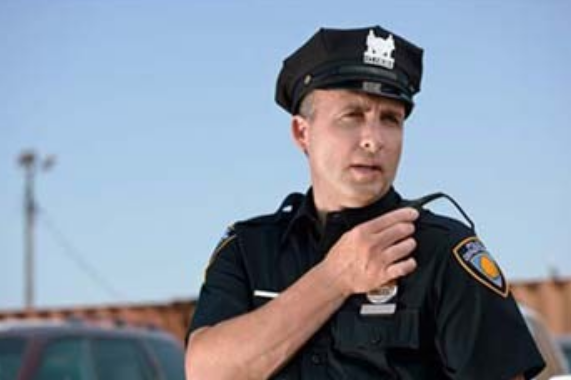

CRIME
CALIFORNIA
GOVERNMENT CODE
13951(b)(1).
"Crime"
means a crime or public offense, wherever it may take place, that would
constitute a misdemeanor or a felony if the crime had been committed in
California by a competent adult.
In
View of Code Civ. Proc. §24, declaring actions to be two kinds, civil
and criminal, and §22, defining actions, there is no such thing as a
“quasi-criminal act.”
Ex
Parte Clark (1914), 24 C.A. 389
All crimes are against the state.
People v. Weber (1948) 84 C.A.2d 126
A
"public
offense" is synonymous with "a crime" and a crime includes both
felonies and misdemeanors.
Burks v. United States, 287 F.2d 117
(9th Cir.1961).
Prosecution
must establish that a crime has been committed.
People v. Brower
(1949) 92 C.A. 2d 562
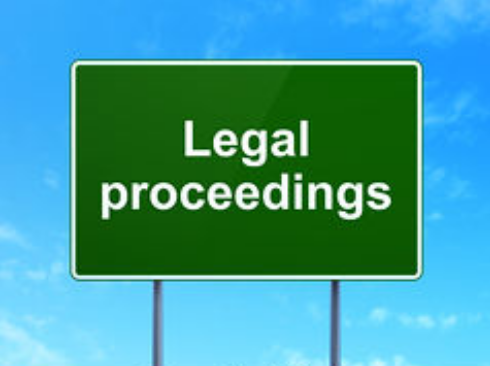 Are based on rules that are printed and are
on-line.
Are based on rules that are printed and are
on-line.
 ONLY THE
ATTORNEY GENERAL OR
DISTRICT ATTORNEY ARE
ONLY THE
ATTORNEY GENERAL OR
DISTRICT ATTORNEY ARE

AUTHORIZED BY THE LEGISLATURE TO PROSECUTE CRIMINAL ACTIONS
 THE
DISTRICT ATTORNEY HAS THE PREROGATIVE TO PROCECUTE AN ALLEGED CRIME
THE
DISTRICT ATTORNEY HAS THE PREROGATIVE TO PROCECUTE AN ALLEGED CRIME

 THE
DISTRICT ATTORNEY IS NOT REQUIRED TO PROSECUTE AN ALLEGED CRIME
THE
DISTRICT ATTORNEY IS NOT REQUIRED TO PROSECUTE AN ALLEGED CRIME

The
investigation and prosecution of public offenses is, of course, the
responsibility and prerogative of the Attorney General and the several
district attorneys (Cal. Const., art. V, § 13; Gov. Code, § 26500), and
no one may intrude upon these activities without the concurrence,
approval, or authorization of such officers. (Dix v. Superior Court
(1991) 53 Cal.3d 442, 451 [279 Cal.Rptr. 834, 807 P.2d 1063]; People ex
rel. Kottmeier v. Municipal Court (1990) 220 Cal.App.3d 602, 609 [269
Cal.Rptr. 542]; People v. Shults (1978) 87 Cal.App.3d 101, 106 [150
Cal.Rptr. 747]; Hicks v. Board of Supervisors (1977) 69 Cal.App.3d 228,
240-241 [138 Cal.Rptr. 101].)
Los Angeles City Ethics Com. v.
Superior Court (Fuentes) (1992) 8
Cal.App.4th 1287
The
prosecution of criminal offenses on behalf of the People is the sole
responsibility of the public prosecutor. (Gov. Code, §§ 26500, 26501;
see Cal. Const., art. V, § 13.)
[2] The prosecutor ordinarily
has sole discretion to determine whom to charge, what charges to file
and pursue, and what punishment to seek. (E.g., People v. Sidener
(1962) 58 Cal.2d 645, 650 [25 Cal.Rptr. 697, 375 P.2d 641].) No private
citizen, however personally aggrieved, may institute criminal
proceedings independently (e.g., Rosato v. Superior Court (1975) 51
Cal.App.3d 190, 226 [124 Cal.Rptr. 427]), and the prosecutor's own
discretion is not subject to judicial control at the behest of persons
other than the accused. (People v. Wallace (1985) 169 Cal.App.3d 406,
410 [215 Cal.Rptr. 203]; Hicks v. Board of Supervisors (1977) 69
Cal.App.3d 228, 240-241 [138 Cal.Rptr. 101]; Taliaferro v. Locke (1960)
182 Cal.App.2d 752, 755-757 [6 Cal.Rptr. 813].) An individual exercise
of prosecutorial discretion is presumed to be " 'legitimately founded
on the complex considerations necessary for the effective and efficient
administration of law enforcement. ...' " (People v. Keenan (1988) 46
Cal.3d 478, 506 [250 Cal.Rptr. 550, 758 P.2d 1081], quoting People v.
Heskett (1982) 30 Cal.3d 841, 860 [180 Cal.Rptr. 640, 640 P.2d 776].)
[53 Cal.3d 452]
Exclusive prosecutorial discretion must also
extend to the conduct of a criminal action once commenced. "In
conducting a trial a prosecutor is bound only by the general rules of
law and professional ethics that bind all counsel." (Taliaferro v.
Locke, supra, 182 Cal.App.2d at p. 756.) The prosecutor has the
responsibility to decide in the public interest whether to seek,
oppose, accept, or challenge judicial actions and rulings. These
decisions, too, go beyond safety and redress for an individual victim;
they involve "the complex considerations necessary for the effective
and efficient administration of law enforcement." There is no place in
this scheme for intervention by a victim pursuing personal concerns
about the case.
Dix v.
Superior Court (People) (1991) 53 Cal.3d 442
Thus
the theme which runs throughout the criminal procedure in this state is
that all persons should be protected from having to defend against
frivolous prosecutions and that one major safeguard against such
prosecutions [27 Cal.App.3d 206] is the function of the district
attorney in screening criminal cases prior to instituting a
prosecution. fn. 8
Due
process of law requires that criminal prosecutions be instituted
through the regular processes of law. These regular processes include
the requirement that the institution of any criminal proceeding be
authorized and approved by the district attorney.
People v. Municipal Court
(Pellegrino) (1972),
27
Cal.App.3d 193



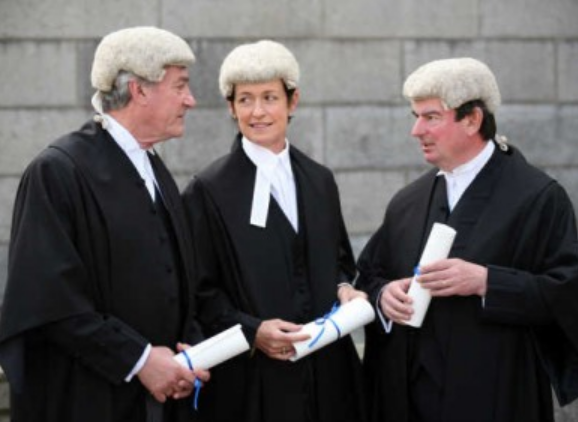 We get to make up our own rules!
We get to make up our own rules!
Why
weren't you invited to participate in the development of the
"innovative procedures"? How do you know they benefit you?
How do you know what rules to use when you're subjected to
the
"innovative system" the courts and attorneys have developed if you
decide to have your day in court because you believe the officer may be
wrong? How will you know what procedures to use to go about
fixing your problem?
Fortunately the codes are available on-line 24/7 so there's no reason
for anyone to claim they didn't know the law. What
commissioner
or judge would buy the "Gee,
I didn't know your honor." defense, due to the fact they
KNOW the codes are avaliable for access 24/7 365?
Government was created by
the people for the people, not by the people for the government
employees. It's an absurd proposition that the employees have more
power than the employer. Hence, the importance of knowing
the
rules applicable to the employees and their job description.
Even
if the officer is not expected to know the law of all 50 states, surely
he is expected to know the California Vehicle Code,...
THE
PEOPLE v.
JESUS SANTOS SANCHEZ REYES (2011) 196 Cal.App.4th 856,
COURT OF APPEAL OF THE STATE OF CALIFORNIA
Both the police we honor
and the criminals we prosecute are subject to the same binding
Constitution.
SMITH v.
CITY
OF HEMET, 394 F.3d 689 (9th Cir. 2005) (en banc)
Police
officer may not rely on good faith, inarticulable hunches, or
generalized suspicions to meet standard of reasonable suspicion to
justify investigatory stop.
U.S.
v. Velarde, 823 F. Supp. 792. (D.
Hawaii 1993)
“To
punish a person because he has done what the law plainly allows him to
do is a due process violation of the most basic sort.”
Bordenkircher v. Hayes, 434 US 357, 363
(1978)
U.S. v.
Goodwin, 457 US 368, 372 (1982)
If
the averments contained in the affidavit are true, it may be that the
present complaint was drawn so as to get past a demurrer, and so as to
get to trial on a purely fictitious and nonexistent cause of action.
If so, it constitutes an abuse of judicial process.
To
take up the time of the courts with an action known by the attorney to
be false and fictitious is clearly an abuse of judicial process.
The courts involved are not impotent to protect themselves from such
imposition. They possess inherent powers to prevent the administration
of justice from being brought into disrepute by such tactics, [67
Cal.App.2d 897] and specifically may use the implied power "to properly
and effectively function as a separate department in the scheme of our
state government" (Brydonjack v. State Bar, 208 Cal. 439 [281 P. 1018,
66 A.L.R. 1507]) to supervise and discipline "the conduct of attorneys
who are officers of the court." (Barton v. State Bar, 209 Cal. 677, 681
[289 P. 818].) These powers do not depend upon
constitutional
grant but arise from the inherent power "necessary to the orderly and
efficient exercise of jurisdiction." (14 Am.Jur., pp. 370, 372, § 171.)
If
upon such a hearing it develops that there has been a deliberate
intentional abuse of the judicial processes by counsel for appellant,
the trial court possesses full and complete powers to punish such abuse
by contempt proceedings or otherwise.
Corum v.
Hartford Acc. & Ind. Co., 67 Cal.App.2d 891
[Civ. No. 12705. First Dist., Div. One. Feb. 9,
1945.]
Government
officials performing discretionary functions “are shielded from
liability for civil damages insofar as their conduct does not violate
clearly established statutory or constitutional rights of which a
reasonable person would have known.” Harlow, 457 U.S. at 818,
102
S.Ct. 2727.
Mary
CLEMENT, Plaintiff-Appellant, v. CITY OF GLENDALE, Defendant, J
& E
Service Inc., d/b/a Monterey Tow Service; J. Young, an
individual, Defendants-Appellees. (2008), No. 05-56692,
9th Circuit Court of Appeals
Was there
an actual violation.
When you're exercising clearly established constitutionally
secured rights you're immune from arrest and criminal prosecution for
crime.
"The
relevant, dispositive inquiry in determining whether a right is clearly
established is whether it would be clear to a reasonable officer that
his conduct was unlawful in the situation he confronted." (Saucier v.
Katz , supra , 533 U.S. at p. 202.)
Macias
v.
County of Los Angeles (2006) 144 Cal.App.4th 313
Of
course this is "dispositive" because when you're exercising clearly
established rights you're not harming anyone nor breaking any rule.
So that seems to be the first order of business.
If
the arrest was illegal, where's a better place to report it than open
court in front of a judicial officer while the interaction is being
officially recorded? And who says you
have to have a jerk for a judge?
Title 28, United States Code,
Part I, Chapter 21, §455 Disqualification of justice, judge, or
magistrate judge
(a)
Any justice, judge, or magistrate judge of the United States shall
disqualify himself in any proceeding in which his impartiality might
reasonably be questioned.
(b) He shall also disqualify himself in the following
circumstances:
(1) Where he has a personal bias or prejudice concerning a party, or
personal knowledge of disputed evidentiary facts concerning the
proceeding;
(2) Where in private practice he
served as lawyer in the matter in controversy, or a lawyer with whom he
previously practiced law served during such association as a lawyer
concerning the matter, or the judge or such lawyer has been a material
witness concerning it;
(3) Where he has served in
governmental employment and in such capacity participated as counsel,
adviser or material witness concerning the proceeding or expressed an
opinion concerning the merits of the particular case in controversy;
(4) He knows that he, individually or as a fiduciary, or his spouse or
minor child residing in his household, has a financial interest in the
subject matter in controversy or in a party to the proceeding, or any
other interest that could be substantially affected by the outcome of
the proceeding;
(5) He or his spouse, or a person
within the third degree of relationship to either of them, or the
spouse of such a person:
(i) Is a
party to the proceeding, or an officer, director, or trustee of a party;
(ii) Is
acting as a lawyer in the proceeding;
(iii) Is known by the judge to have an
interest that
could be substantially affected by the outcome of the proceeding;
(iv) Is
to the judge’s knowledge likely to be a material witness in the
proceeding.
(c)
A judge should inform himself about his personal and fiduciary
financial interests, and make a reasonable effort to inform himself
about the personal financial interests of his spouse and minor children
residing in his household.
(d) For the purposes of this section the following words or
phrases shall have the meaning indicated:
(1) “proceeding” includes pretrial,
trial, appellate review, or other stages of litigation;
(2) the degree of relationship is
calculated according to the civil law system;
(3) “fiduciary” includes such
relationships as executor, administrator, trustee, and guardian;
(4) “financial interest” means ownership of a legal or equitable
interest, however small, or a relationship as director, adviser, or
other active participant in the affairs of a party, except that:
(i) Ownership in a mutual or common
investment fund
that holds securities is not a “financial interest” in such securities
unless the judge participates in the management of the fund;
(ii) An office in an educational,
religious,
charitable, fraternal, or civic organization is not a “financial
interest” in securities held by the organization;
(iii) The proprietary interest of a
policyholder in
a mutual insurance company, of a depositor in a mutual savings
association, or a similar proprietary interest, is a “financial
interest” in the organization only if the outcome of the proceeding
could substantially affect the value of the interest;
(iv) Ownership of government securities
is a
“financial interest” in the issuer only if the outcome of the
proceeding could substantially affect the value of the securities.
(e) No justice, judge, or magistrate judge shall accept from
the
parties to the proceeding a waiver of any ground for disqualification
enumerated in subsection (b). Where the ground for disqualification
arises only under subsection (a), waiver may be accepted provided it is
preceded by a full disclosure on the record of the basis for
disqualification.
(f) Notwithstanding the
preceding provisions of this section, if any justice, judge, magistrate
judge, or bankruptcy judge to whom a matter has been assigned would be
disqualified, after substantial judicial time has been devoted to the
matter, because of the appearance or discovery, after the matter was
assigned to him or her, that he or she individually or as a fiduciary,
or his or her spouse or minor child residing in his or her household,
has a financial interest in a party (other than an interest that could
be substantially affected by the outcome), disqualification is not
required if the justice, judge, magistrate judge, bankruptcy judge,
spouse or minor child, as the case may be, divests himself or herself
of the interest that provides the grounds for the disqualification.
(June 25, 1948, ch. 646, 62 Stat. 908; Pub. L. 93–512, § 1, Dec. 5,
1974, 88 Stat. 1609; Pub. L. 95–598, title II, § 214(a), (b), Nov. 6,
1978, 92 Stat. 2661; Pub. L. 100–702, title X, § 1007, Nov. 19, 1988,
102 Stat. 4667; Pub. L. 101–650, title III, § 321, Dec. 1, 1990, 104
Stat. 5117.)
CALIFORNIA GOVERNMENT CODE
19572. Each of the following constitutes cause for
discipline of an employee, or of a person whose name appears on any
employment list:
(a) Fraud in
securing appointment.
(b) Incompetency.
(c)
Inefficiency.
(d) Inexcusable
neglect of duty.
(e) Insubordination.
(f) Dishonesty.
(g) Drunkenness on
duty.
(h) Intemperance.
(i) Addiction to
the use of controlled substances.
(j) Inexcusable
absence without leave.
(k) Conviction of a
felony or conviction of a misdemeanor involving moral turpitude. A plea
or verdict of guilty, or a conviction following a plea of nolo
contendere, to a charge of a felony or any offense involving moral
turpitude is deemed to be a conviction within the meaning of this
section.
(l) Immorality.
(m) Discourteous
treatment of the public or other employees.
(n) Improper
political activity.
(o) Willful
disobedience.
(p) Misuse of state
property.
(q) Violation of
this part or of a board rule.
(r) Violation of
the prohibitions set forth in accordance with Section 19990.
(s) Refusal to take
and subscribe any oath or affirmation that is required by law in
connection with the employment.
(t) Other failure
of good behavior either during or outside of duty hours, which is of
such a nature that it causes discredit to the appointing authority or
the person's employment.
(u) Any negligence,
recklessness, or intentional act that results in the death of a patient
of a state hospital serving the mentally disabled or the
developmentally disabled.
(v) The use during
duty hours, for training or target practice, of any material that is
not authorized for that use by the appointing power.
(w) Unlawful
discrimination, including harassment, on any basis listed in
subdivision (a) of Section 12940, as those bases are defined in
Sections 12926 and 12926.1, except as otherwise provided in Section
12940, against the public or other employees while acting in the
capacity of a state employee.
(x) Unlawful
retaliation against any other state officer or employee or member of
the public who in good faith reports, discloses, divulges, or otherwise
brings to the attention of, the Attorney General or any other
appropriate authority, any facts or information relative to actual or
suspected violation of any law of this state or the United States
occurring on the job or directly related to the job.
Everyone on the government payroll is an employee, including police,
dirstrict attorneys, judges and everyone else working there.
I guess
none of that
means what it says because if it did then we’d have to admit we’ve been
pretty screwed over for a very long time by people who should know
better and haven’t lifted a finger to do anything about
it.
Infractions are not crimes. There is no probable
cause for
a valid warrantless arrest given the conduct in question was not a
crime.
Then
there's that commercial aspect of the allegation that must be
proved with sufficient evidence that one was involved in commerce at
the time the officer determined a violation had occurred.
NOTICE
TO APPEAR
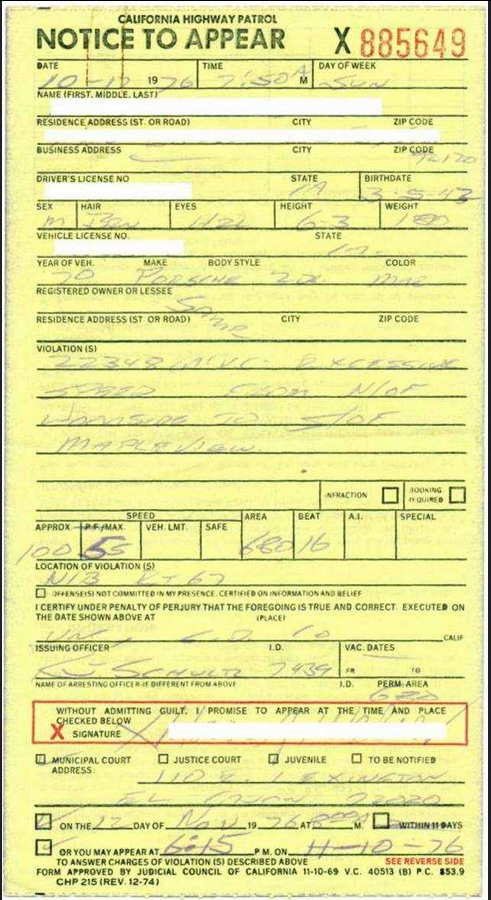 IS NOT
A COMPLAINT
IS NOT
A COMPLAINT
"Every
fact which, if controverted, plaintiff must prove to maintain his
action must be stated in the complaint."
Jerome
v.
Stebbins (1859), 14 C. 457;
Green v.
Palmer (1860), 15 C. 411, 76 Am. Sec. 492;
Johnson
v.
Santa Clara County (1865), 28 C. 545.
"The complaint, on its face, must show that the
plaintiff has the better right."
Rogers
v.
Shannon (1877), 52 C. 99
[4]
A plaintiff is required to set forth in his complaint the essential
facts of his case with reasonable precision and with sufficient clarity
and particularity that the defendant may be apprised of the nature,
source and extent of his cause of action. (Dunn v. Dufficy, 194 Cal.
383, 391 [228 P. 1029]; Rannard v. Lockheed Aircraft Corp., 26 Cal.2d
149, 156 [157 P.2d 1]; Goldstein v. Healy, 187 Cal. 206, 210 [201 P.
462]; Miller v. Pacific Constructors, Inc., 68 Cal.App.2d 529, 539 [157
P.2d 57].)
Metzenbaum
v.
Metzenbaum, 86 Cal.App.2d 750
[Civ. No. 16288. Second Dist., Div. Two. July 14,
1948.]
"Complaint,
to be sufficient, must contain a statement of facts which, without the
aid of other facts not stated shows a complete cause of action."
Going v.
Dinwiddie (1890), 86 C. 633, 25 P. 129.
"Pleadings should set forth facts, and not merely
the opinions of parties."
Snow v.
Halstead (1851), 1 C. 359.
[2]
(2) In pleading, the essential facts upon which a determination of the
controversy depends should be stated with clearness and precision so
that nothing is left to surmise. (Philbrook v. Randall, 195 Cal 95, 103
[231 P. 739].)
[3] (3) Mere recitals, references to or
allegations of material facts which are left to surmise are subject to
a special [98 Cal.App.2d 444] demurrer for uncertainty. (Corum v.
Hartford Acc. & Ind. Co., 67 Cal.App.2d 891, 894 [155 P.2d
710].)
[4]
Applying the foregoing rules to the facts of the instant case it is
evident that the trial court's orders and judgments must be sustained.
The orders sustaining the demurrers were general in their terms and
therefore under rule (1) supra, if properly taken on any ground stated
therein must be affirmed.
Bernstein
v.
Piller, 98 Cal.App.2d 441
[Civ. No. 17607. Second Dist., Div. Two. July 13,
1950.]
"A
complaint must contain a statement of facts showing the jurisdiction of
the court, ownership of a right by plaintiff, violation of that right
by the defendant, injury resulting to plaintiff by such violation,
justification for equitable relief where that is sought, and a demand
for relief."
Pierce
v.
Wagner, 134 F.2d. 958.
"Essential
facts on which legal points in controversy depend, should be pleaded
clearly and precisely, so that nothing is left for court to surmise."
Gates v.
Lane
(1872), 44 C. 392.
"The
test of the materiality of an averment in a pleading is this: Could the
averment be stricken from the pleading without leaving it insufficient?"
Whitwell
v.
Thomas (1858), 9 C. 499.
"In
pleading, the essential facts on which a determination of the
controversy depends should be stated with clearness and precision so
that nothing is left to surmise."
Bernstein
v.
Fuller (1950), 98 C.A.2d 441, 220 P.2d 558.
"The
"facts" which the court is to find and the "facts" which a pleader is
to state lie in the same plane - that is, in both connections, "facts"
are to be stated according to their legal effect."
Hihn v.
Peck
(1866), 30 C. 280.
"In general, matters of substance must be alleged
in direct terms, and not by way of recital or reference."
Silvers
v.
Grossman (1920), 183 C. 693, 192 P. 534; Reid v. Kerr
(1923), 64 C.A. 117, 220 P. 688.
"A fact which constitutes an essential element of
a cause of action cannot be left to inference."
Roberts
v.
Roberts, 81 C.A.2d 871, 185 P.2d 381.
"Material facts must be alleged directly and not
by way of recital."
Vilardo
v.
Sacramento County (1942), 54 C.A.2d 413, 129 P.2d 165.
"Material allegations must be distinctly stated
in complaint."
Goland
v.
Peter Nolan & Co. (1934), 33 P.2d 688, subsequent
opinion 38 P.2d 783, 2 C.2d 96.
"Matters of substance must be presented by direct
averment and not by way of recital."
Stefani
v.
Southern Pacific Co. (1932), 119 C.A. 69, 5 P.2d 946.
"A pleading which leaves essential facts to
inference or argument is bad."
Ahlers.
v.
Smiley (1909), 11 C.A.343, 104 P. 997.
"The
forms alone of the several actions have been abolished by the
statute. The substantial allegations of the complaint in a
given
case must be the same under our practice act as at common law."
Miller
v. Van
Tassel (1864), 24 C. 459.
"A pleading cannot be aided by reason of facts
not averred."
San
Diego
County v. Utt (1916), 173 C. 554, 160 P. 657.
"[2]
While the complaint should be liberally construed, with a view to
substantial justice between the parties (Code Civ. Proc., sec. 452),
that rule "does not, however, permit the insertion, by construction, of
averments which are neither directly made nor within the fair import of
those which are set forth. On the contrary, facts necessary to a cause
of action but not alleged must be taken as having no existence." (21
Cal.Jur. 54; Feldesman v. McGovern, (1941) 44 Cal.App.2d 566, 571 [112
P.2d 645]; Estrin v. Superior Court, (1939) 14 Cal.2d 670, 677 [96 P.2d
340].) ."
Frace v.
Long
Beach City High School Dist. (1943), 137 P.2d 60, 58
C.A.2d 566
"A fact necessary to pleader's cause of action,
if not pleaded, must be taken as having no existence."
Feldesman
v.
McGovern (1941), 44 C.A.2d 566.
"When
pleading is silent as to material dates, or does not clearly state
facts relied on, it must be presumed that statement thereof would
weaken pleader's case."
Whittemore
v.
Davis (1931), 112 C.A. 702, 297 P. 640.
"Material matters in pleadings must be distinctly
stated in ordinary and concise language."
Brown v.
Sweet
(1928), 95 C.A. 117, 272 P. 614.
"Facts
contained in public records should be alleged in pleading when they
constitute necessary elements of good cause of action."
Gray v.
White
(1935), 5 C.A.2d 463, 43 P.2d 318.
"When facts are available from public records, it
is ordinarily improper to allege such facts on mere information and
belief."
People
v.
Birch Securities Co. (1948), 196 P.2d 143, 86 C.A.2d 703,
cert. denied
Birch
Securities Co. v. People of State of California, 69 S.Ct.
745, 336 U.S. 936, 93 L.Ed. 1095.
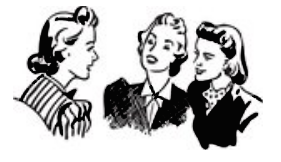

Traffic
experts and the public agree that traffic law enforcement is "criminal"
only in a limited procedural sense. The public and
the
legal system recognize that unsafe driving is a serious social problem,
and the role of law enforcement is to promote traffic safety and
improve driver behavior. For the most part, trials
of
traffic infractions involve no complex problems of law or fact. fn.
3 Attorneys rarely appear in infraction cases for
the
simple reason that the stakes are not worth the
cost. For a
judge who has no special interest in the subject, traffic court is
characterized by the pressure of high volume and the monotony of
repetition. fn. 4 In a large metropolitan court,
where
judicial assignments are influenced by seniority, traffic cases are
assigned to the newest judges on the court, or to commissioners.
In
some jurisdictions traffic infractions have been removed from the
judicial branch and handled by administrative hearing officers attached
to the executive agency which issues operator's
licenses.
In 1975 the California Legislature requested the California Department
of Motor Vehicles to undertake a study to determine the feasibility of
adjudicating minor traffic cases administratively in this state. (Sen.
Con. Res. No. 40, Stats. 1975, Res. ch. 86.) The
department
did conduct such a study and in April 1976 published its report which
concluded, among other things, that administrative adjudication by
legally trained hearing officers "would stabilize and enhance the
quality and efficiency of infraction processing and adjudication." (1
Cal. Dept. of Motor Vehicles: Administrative Adjudication of Traffic
Offenses in Cal. p. 21.)
To avoid a
conflict with the separation of powers requirement of the California
Constitution, the report contemplated that the decisions of the [82
Cal.App.3d 53] administrative hearing officers would be subject to
judicial review in the superior court through a proceeding in mandamus
under Code of Civil Procedure, section 1094.5. (Id, p.
142.) As a practical matter, such a review would be
unavailable to most individuals who were aggrieved by an administrative
decision. Mandate proceedings in the superior court
(unlike
traffic trials) are relatively complex and expensive, and are rarely
attempted without the assistance of an attorney.
Many
persons would be unable and most would be unwilling to incur the
expense of that kind of litigation to escape the administratively
imposed sanction. Thus for all practical purposes,
administrative adjudication would mean a final decision by a person who
was not a judicial officer at all.
The
California Legislature thus far has kept traffic adjudication within
the judicial branch but with expanded use of subordinate judicial
officers.
...the trial of traffic
infraction cases calls for the talents of a person who understands the
special societal function of traffic law enforcement, who is committed
to its educational objective and who has the personal capability of
dealing with people expeditiously, fairly, and in good
spirit.
Regardless
of what the collateral consequences of a traffic conviction may be, our
concern should focus upon the accuracy of the adjudicatory system in
determining which persons charged with violations are in fact
violators. In the context of our present inquiry,
the
crucial question is whether the conviction of the innocent is more
likely to occur in an infraction trial before a commissioner than
before a judge.
People
v.
Lucas (1978) 82 Cal.App.3d 47
Moreover,
the state's substantial interest in maintaining the summary nature of
minor motor vehicle violation proceedings would be impaired by
requiring the prosecution to ascertain for each infraction the
possibility of further criminal proceedings. The
chief
reason for classifying some prohibited acts as infractions is to
facilitate their swift disposition. (People v. Battle (1975) 50
Cal.App.3d Supp. 1, 7 [123 Cal.Rptr. 636].) Unconstrained by
the
more stringent procedural requirements of a major criminal trial,
municipal courts and prosecutors are free to develop innovative
procedures to expedite traffic cases.
In re
Dennis B.,
18 Cal.3d 687
[S.F. No. 23453. Supreme Court of California.
December 28, 1976.]
-
INNOVATIVE PROCEDURES
-
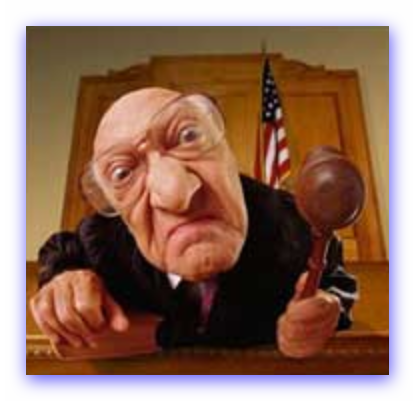 WE'RE GONNA MAKE IT REAL EASY FOR YOU!
GET IT?!
WE'RE GONNA MAKE IT REAL EASY FOR YOU!
GET IT?!
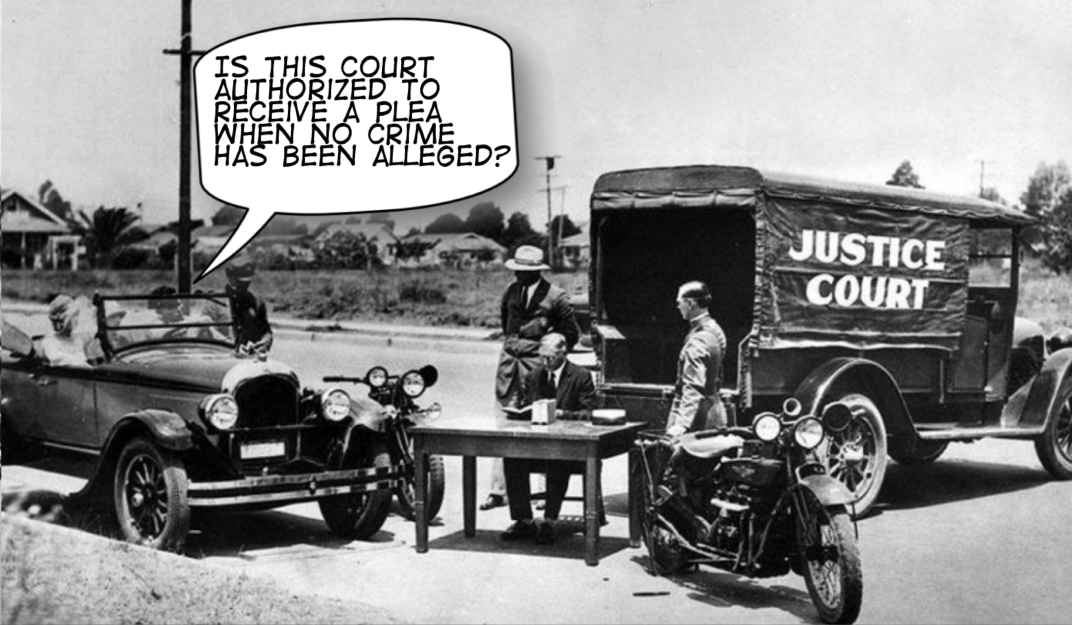 (Actual roadside court. Inglewood,
California, 1926)
(Actual roadside court. Inglewood,
California, 1926) OFFICER:
Sir this is where we accept pleas for violations of the Vehicle Code.
DEFENDANT:
Well you mean alleged violations of the Vehicle Code is that
right? Otherwise why would you need a plea if
you’ve
already determined I’m guilty as alleged?
OFFICER: Sir are you trying to be a
smart ass?
DEFENDANT: No.
OFFICER: Ok then what’s your
plea?
DEFENDANT: Well is the
alleged violation a crime?
OFFICER: It’s an offense sir
and this is where we accept pleas for offenses of the Vehicle Code.
DEFENDANT:
Again officer, you mean alleged offense right because if it’s already
concluded I committed an offense then why would you need a plea?
OFFICER: Are you
trying to be a smart ass?
DEFENDANT: No.
OFFICER: So what’s your plea?
DEFENDANT: Is the alleged
offense a crime?
OFFICER: Sir you’ve been
charged with violating the Vehicle Code now what’s your plea?
DEFENDANT:
Again officer, and I mean no disrespect but you mean alleged violation
right because if it’s already been determined, rather than just
alleged, that I violated anything then you wouldn’t need a plea right?
OFFICER:
Yeah that’s right but remember this is 1926 and all we have are
misdemeanors and felonies but if it was after 1968 then it would be an
infraction, but it’s not after 1968 so it’s a misdemeanor which is a
crime, so yeah, you’ve been accused of a crime, now what’s your plea?
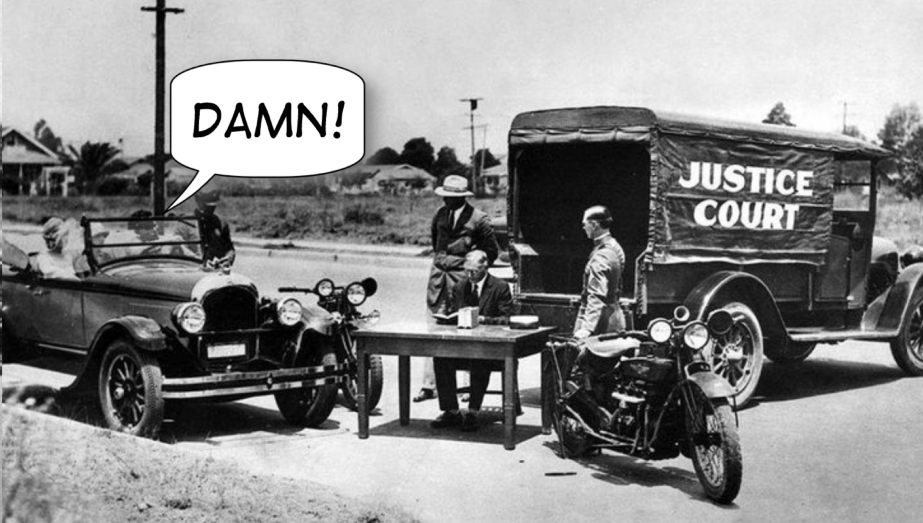
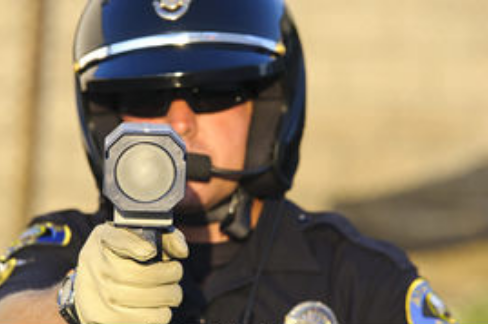
The
primary purpose of a constitution is to place limitations
upon the legislative authority as well as upon the powers of its
co-ordinate branches of government.
Allen v.
State Board of Equalization (1941) 43 Cal.App. 2d 90
Obviously,
administrative agencies, like police officers must obey the
Constitution and may not deprive persons of constitutional rights.
Southern
Pac.
Transportation Co. v. Public Utilities Com., 18 Cal.3d 308
[S.F. No. 23217. Supreme Court of California.
November 23, 1976.]
“The
state constitution is the supreme law of the state,...”. “If
there is
any difference in meaning between the constitution and a statute, the
constitution must prevail,...”.
13
Cal.Jur.3d (Rev) §4, Part 1, p. 25
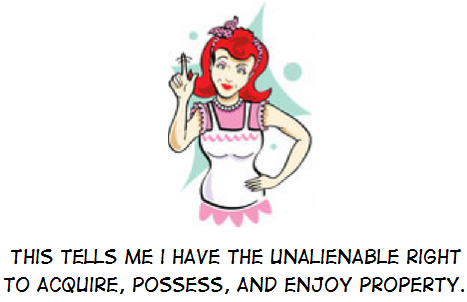
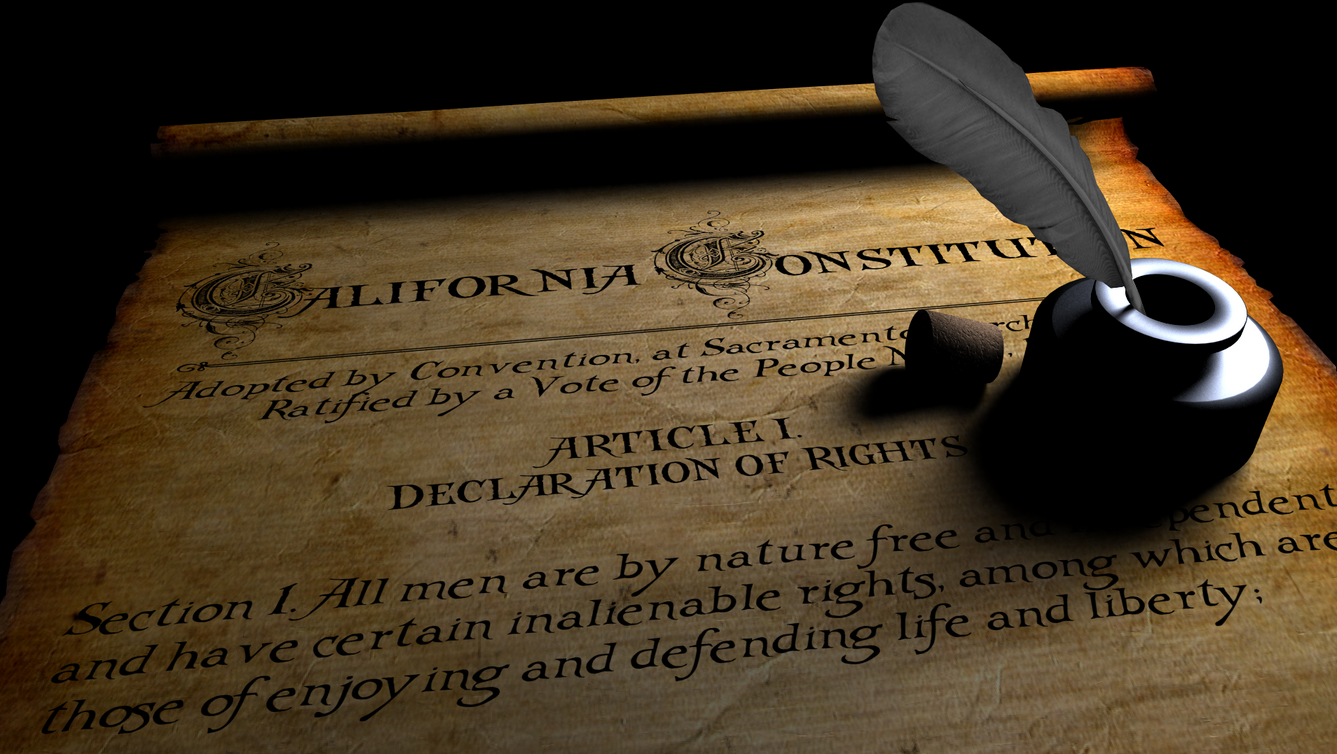


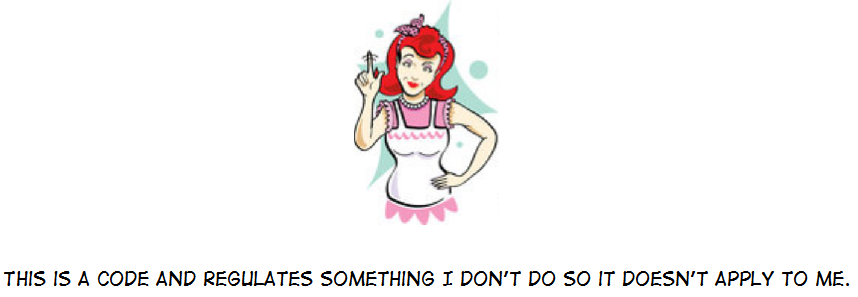
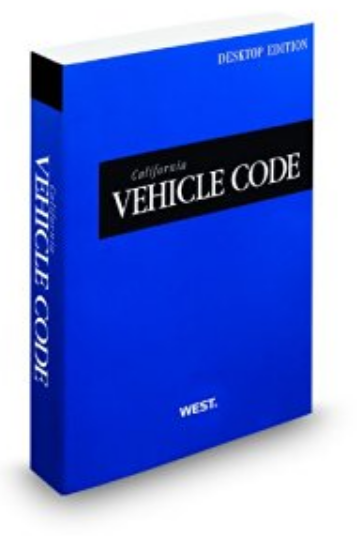
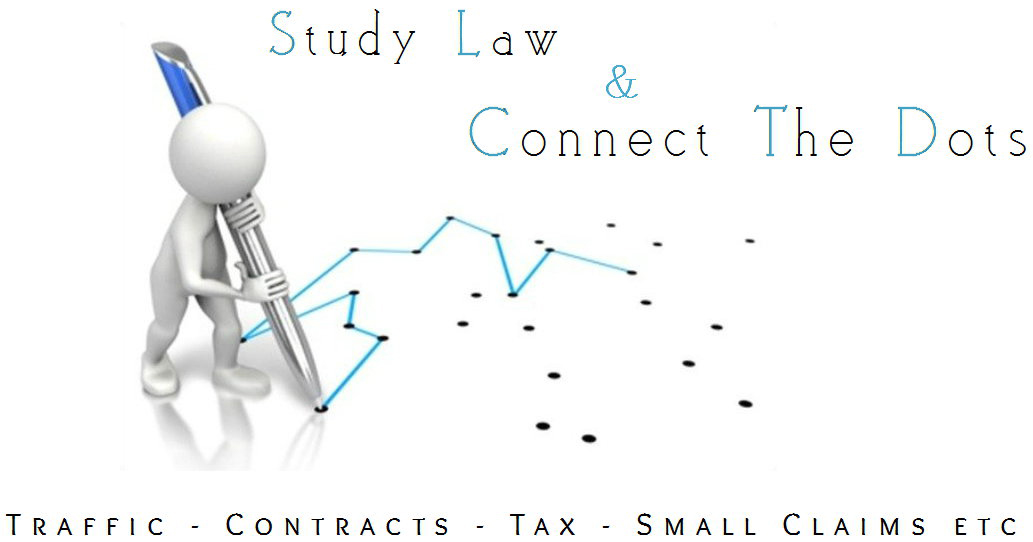

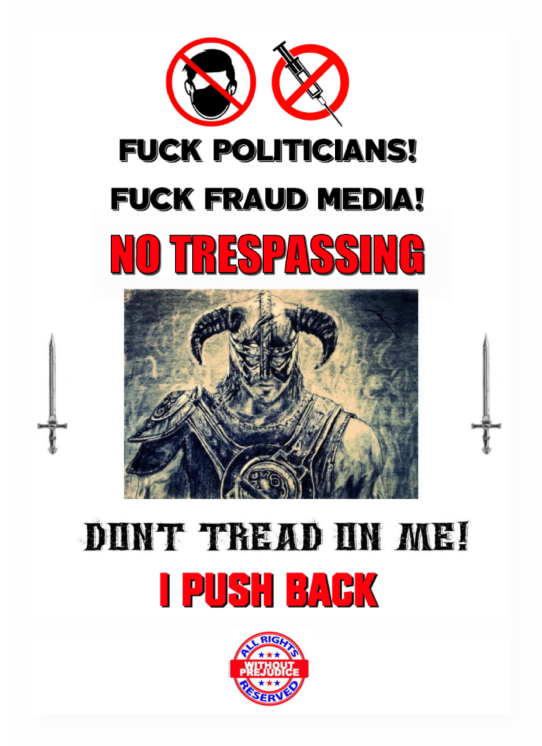


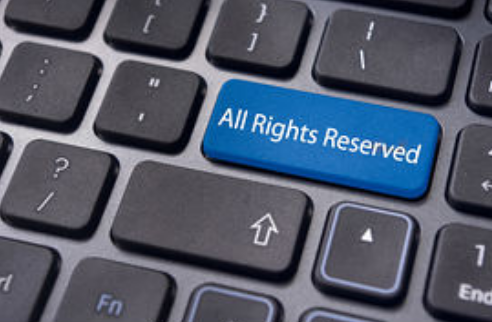
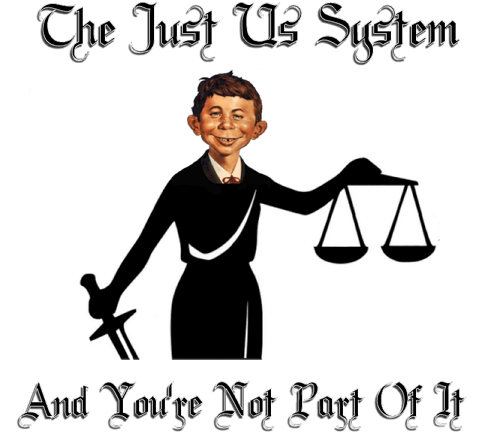
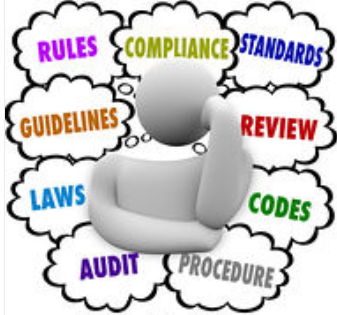





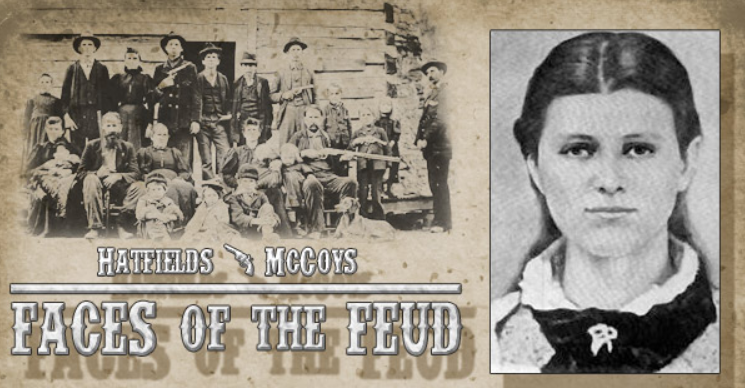


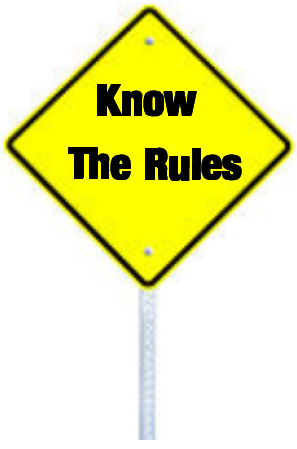
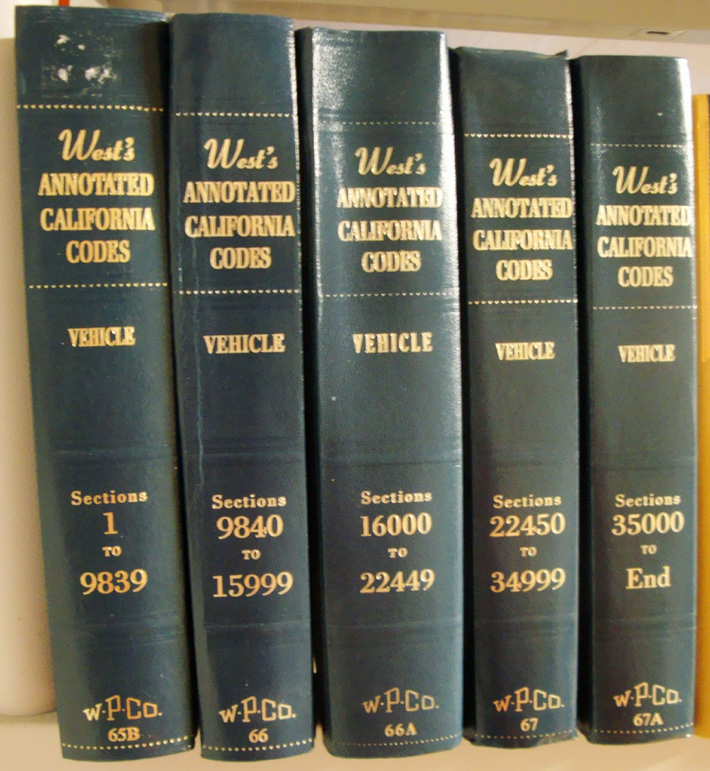
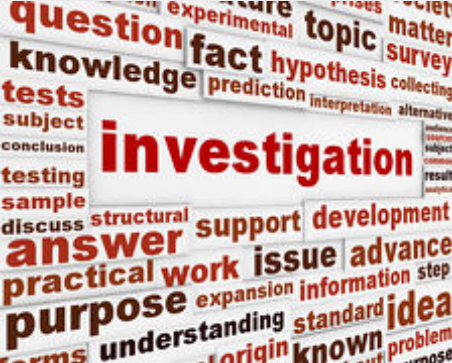
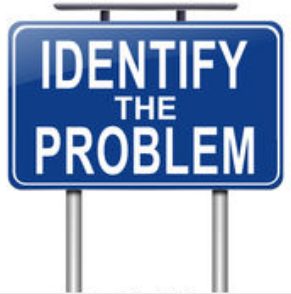
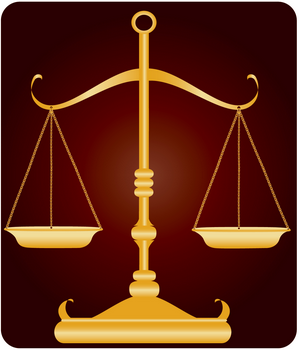


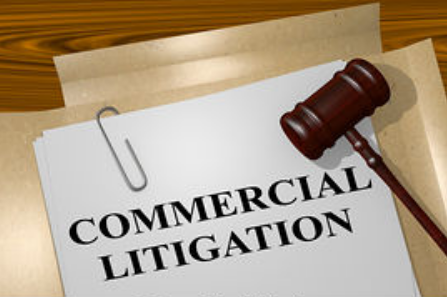

 THERE IS
NO PROSECUTOR BUT THERE IS AN ARRAIGNMENT
THERE IS
NO PROSECUTOR BUT THERE IS AN ARRAIGNMENT 
 NEITHER THE PEOPLE NOR THEIR ATTORNEY APPEARS
NEITHER THE PEOPLE NOR THEIR ATTORNEY APPEARS













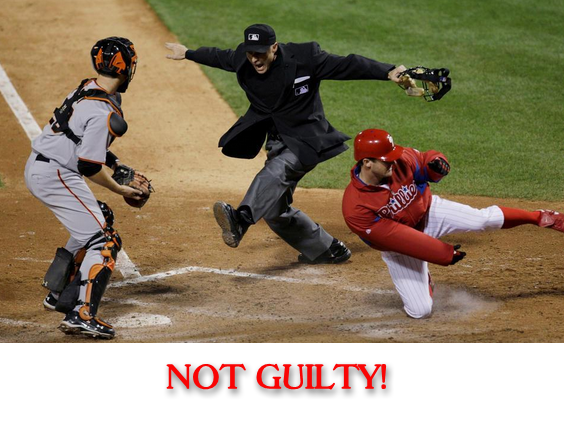
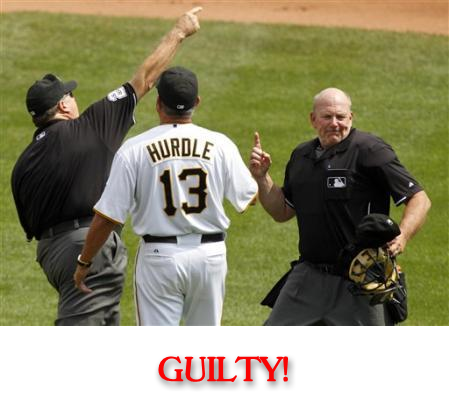










 ONLY THE
ATTORNEY GENERAL OR
DISTRICT ATTORNEY ARE
ONLY THE
ATTORNEY GENERAL OR
DISTRICT ATTORNEY ARE

 THE
DISTRICT ATTORNEY HAS THE PREROGATIVE TO PROCECUTE AN ALLEGED CRIME
THE
DISTRICT ATTORNEY HAS THE PREROGATIVE TO PROCECUTE AN ALLEGED CRIME

 THE
DISTRICT ATTORNEY IS NOT REQUIRED TO PROSECUTE AN ALLEGED CRIME
THE
DISTRICT ATTORNEY IS NOT REQUIRED TO PROSECUTE AN ALLEGED CRIME










